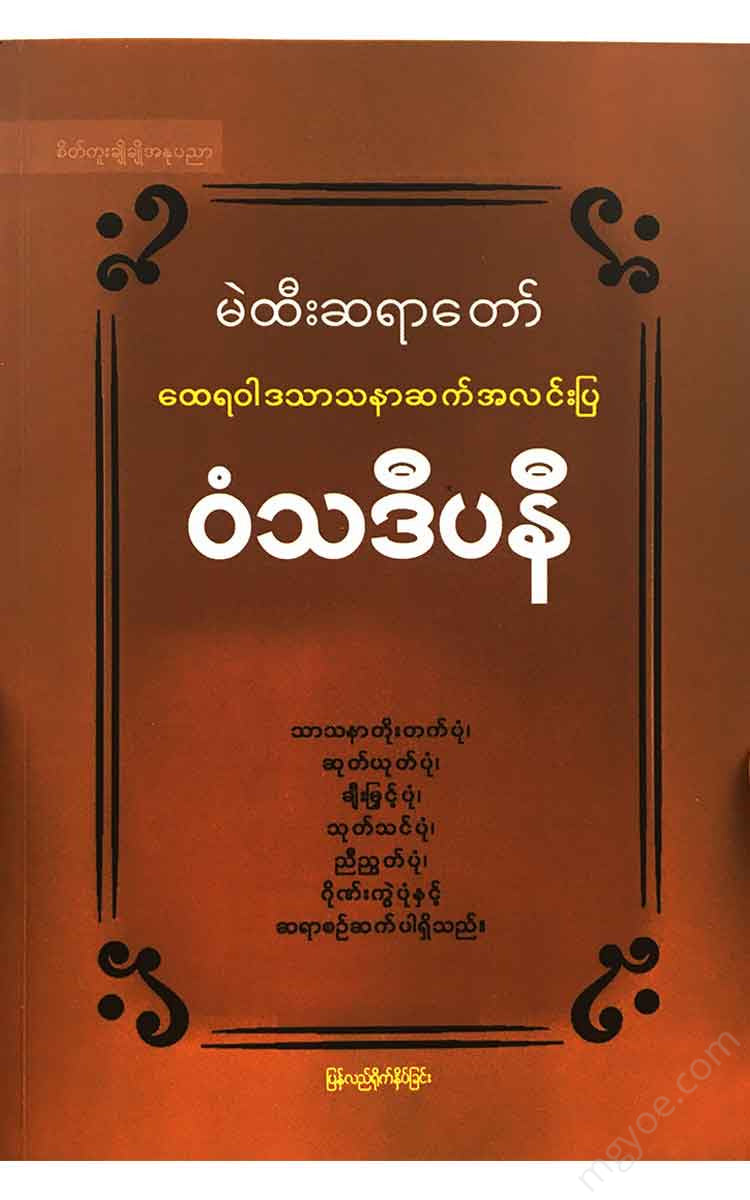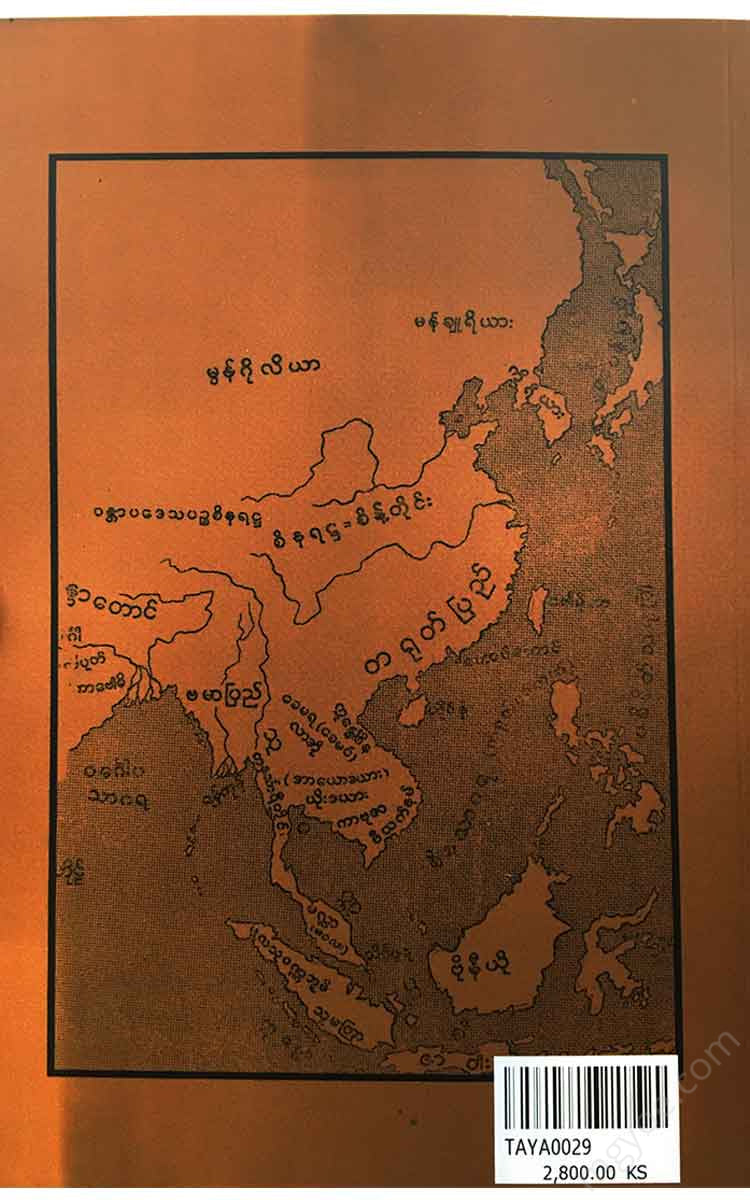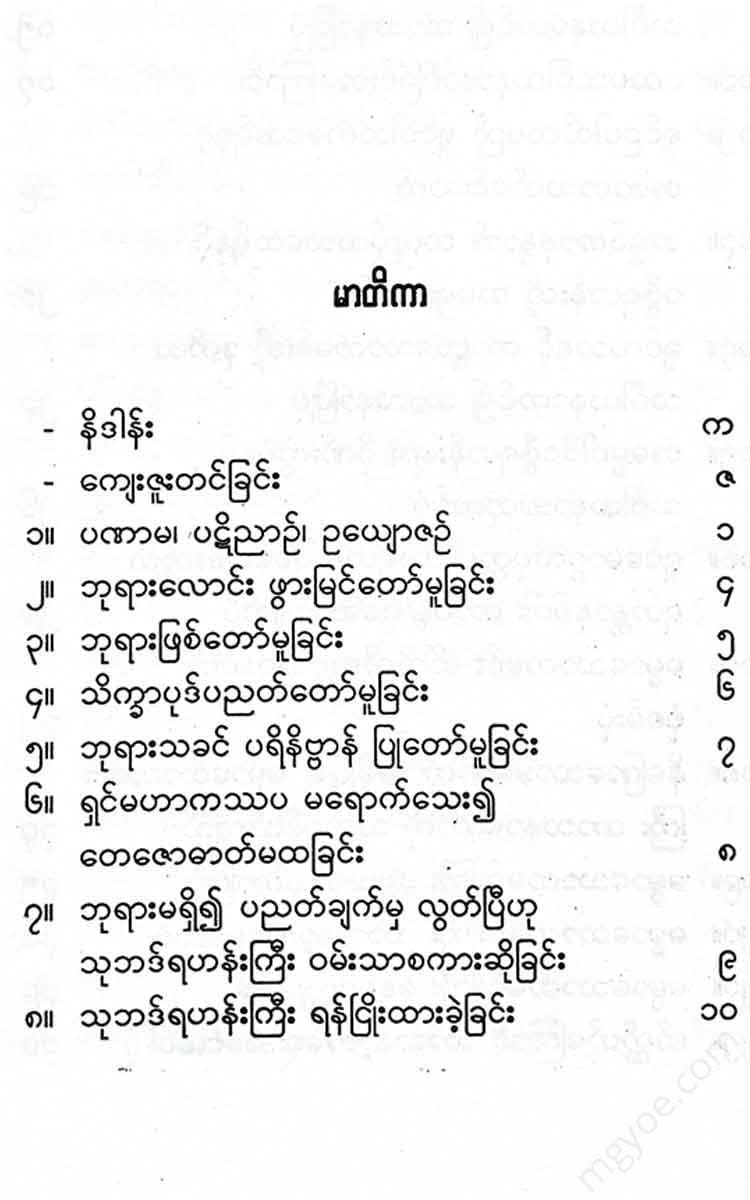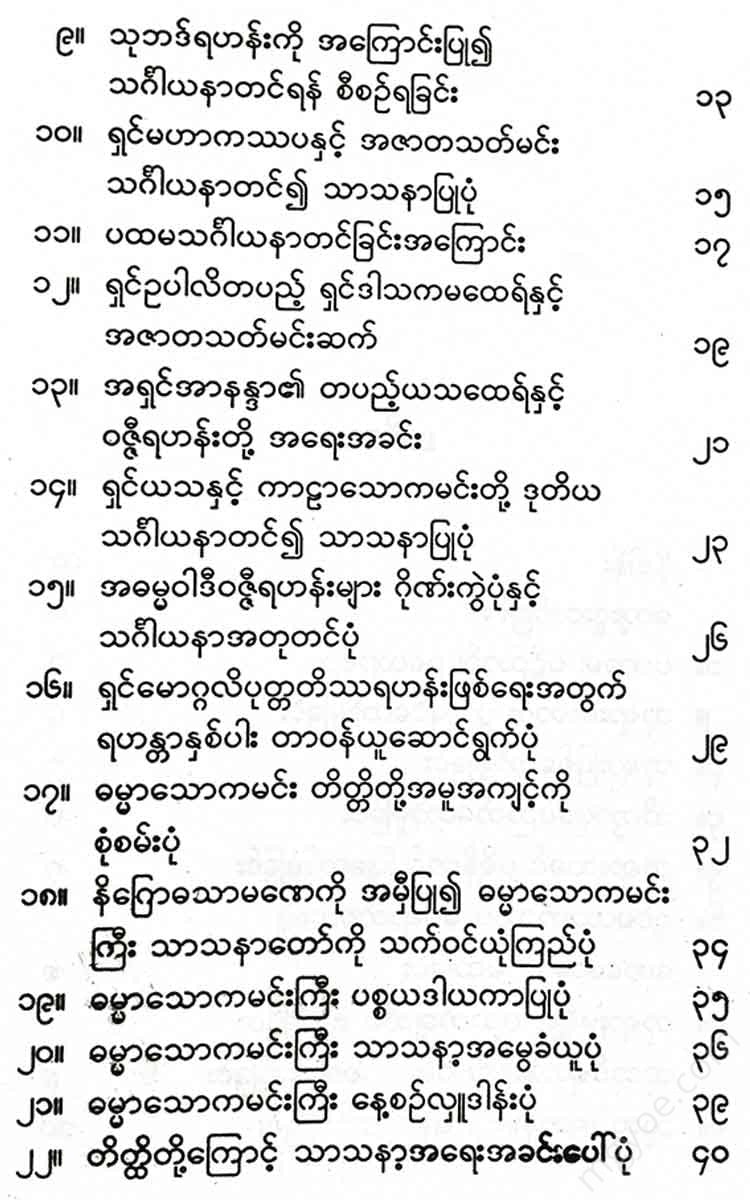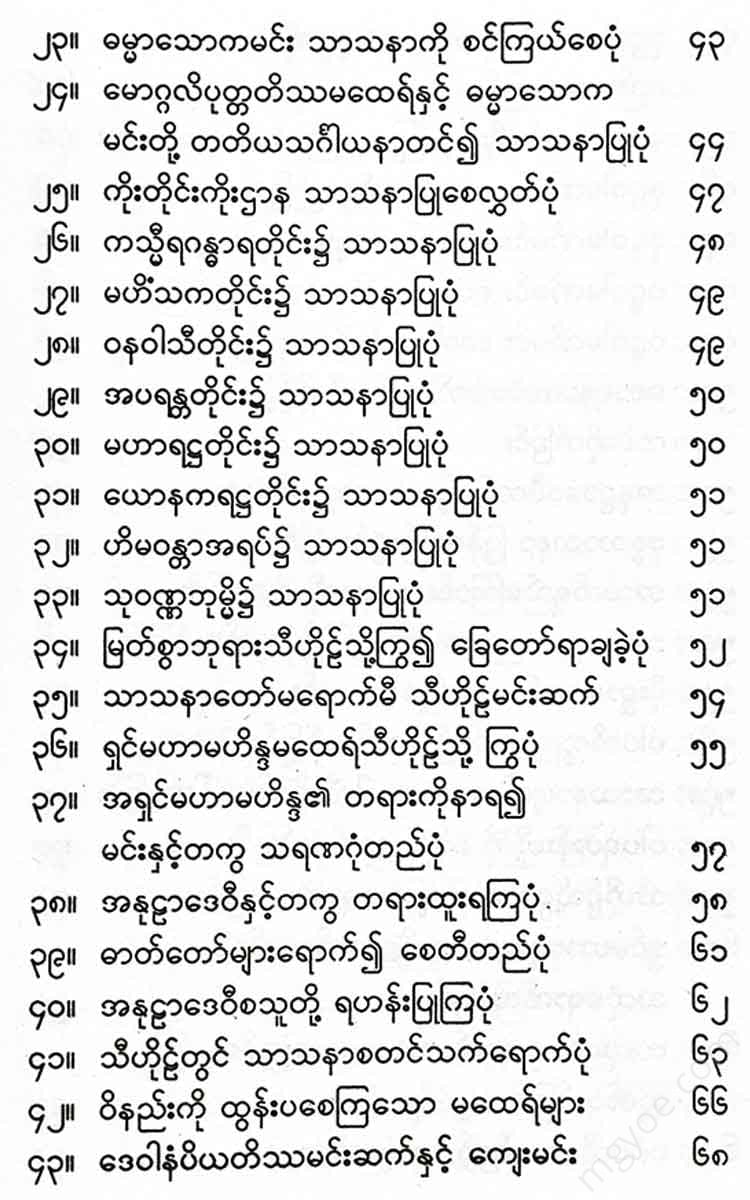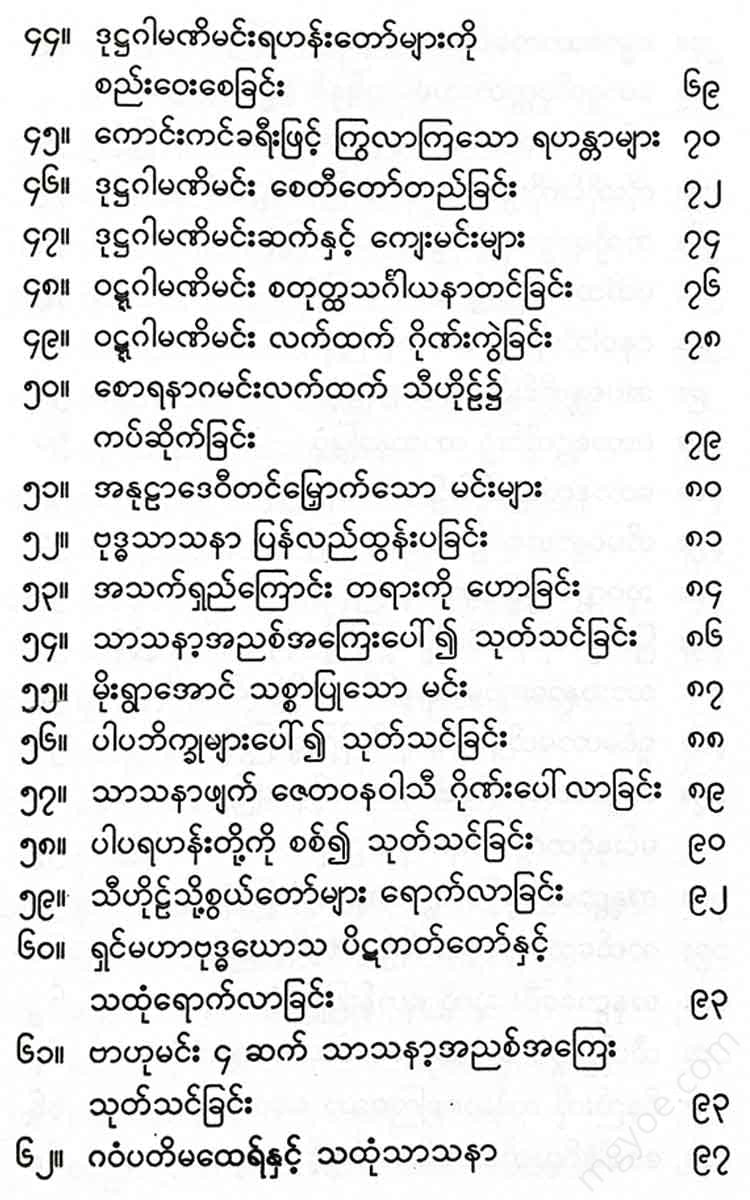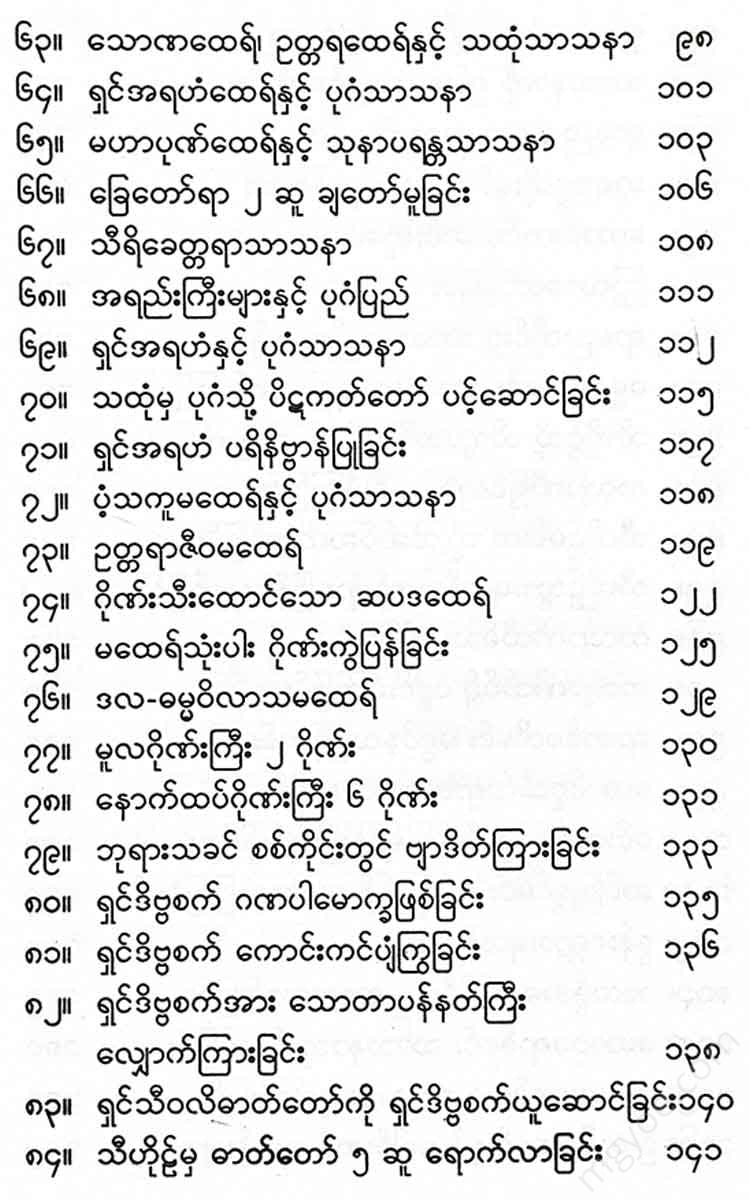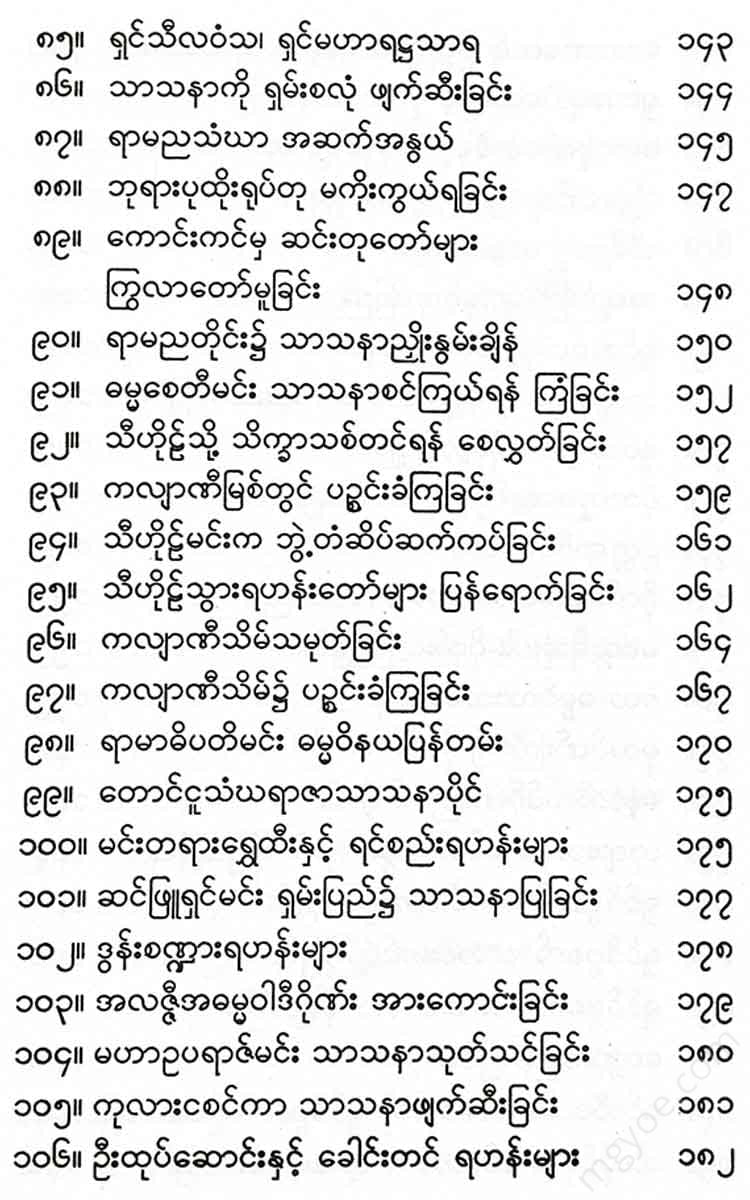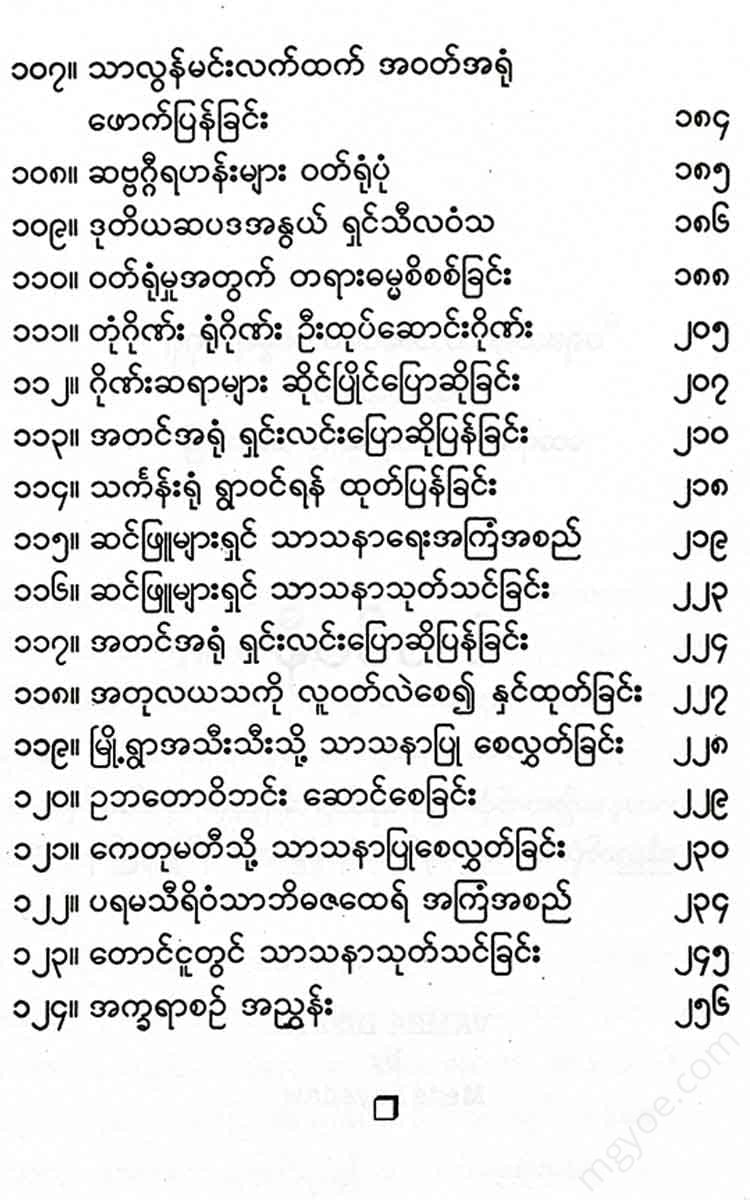စိတ်ကူးချိုချိုစာပေ
Mae Hti Sayadaw - Wansathi Pani
Mae Hti Sayadaw - Wansathi Pani
Couldn't load pickup availability
Introduction
The first city of Amarapura was founded by the Aung Myay Lok Pagoda, the White Elephant Buddha (the Bodao Min Dhamma Gyi), who requested that the “Parama Sriwansa Bhidhaja Mahadharmaraja Guru” Me Hti Sayadaw come to Taungoo to preach and honor him. The Sayadaw went to Taungoo with more than 30 monks and preached.
At that time, monks in Taungoo were corrupting their clothing by wearing a robe, wearing a hat, and entering a village, corrupting their morals by engaging in trade, medicine, and fortune-telling, corrupting their livelihood by giving fruits, flowers, and gardening , and living carelessly without exercising the power of meditation and insight. As a result, not only was the Dhamma fading, but also the thorns of the Dhamma were growing.
The missionary monk, Methi Sayadaw, with the help of the power of the Buddha, and the help of the Buddha's son, King Taungoo, sent his great monks to wherever they were needed to cleanse the religious impurities for 6 years. He was particularly successful. He wanted to fully describe the cleansing of religious impurities during the Buddha's reign, including the good and bad religious events in the Mizzima region, Ceylon, Thaton, Hansawaddy, Sri Keshtara, Bagan, Pinya, Sagaing, Inwa, and the Amarapura period, and so he wrote this book called "Wansathi Deepani".
The book titled Vamsadipani is primarily a book that clearly shows the lineage of the Theravada sect of the Venerable Mahakassapa, Venerable Ananda, Venerable Upali, and other venerable monks. However, it also explains how each king promoted the sect, how he eradicated the filth and dangers of the sect, why the sect flourished and spread, why the sect declined and fell, and all the good and bad events that occurred within the sect.
Scribe
I will briefly describe the biography of the monk who compiled this book. On page 266, number 2040 of the History of the Pitaka, compiled by the chief of the Pitaka, King Mahathiri Zeya, it is stated that “The second edition of the Wandsadipani was compiled by Kyaw Aung San Thar Sayadaw, the second monk of the Kyaungni Monastery.”
Now, in the conclusion of the Vamsa Dipani, it is stated that “the venerable Thera, whose name is Paramasiri Vamsa Bhidhaja Mahadhamrajaguru, was composed in the reign of King Sinphyu Shin, the son of the venerable King, in Ketumati, Taungoo, when that King was ruling as the governor, and this is the end of the Vamsa Dipani.” Therefore, it is not surprising that this Vamsa Dipani was composed by the venerable Thera, Paramasiri Vamsa Bhidhajama.
We only need to research whether there is a separate version of the Wantha Dipani compiled by Kyaw Aung San Thar Sayadaw of the Second Copper Monastery.
The present author of the Vamsadipani is known as the first Mae Htey Sage. He was born in Mae Htey village, Taungoo town in 1104. He entered the religious order when he was an adult. His title was Shinparama and he was a disciple of the Saddhiviharika of the Mae Htey village monk Manima La (the monk of the main monastery of the monastery). (Pages 142-161) Shinparama was a scholar of the Pitaka literature. It is not known under which king he went to Nay Pyi Taw. However, during the reign of King Sintku, among the seven individuals who were involved in the debates, discussions, and explanations of the Theravada sect, Mae Htey Shinparama was one of them. (Page 147)
During the reign of the Bodaw Buddha of Amarapura, the king donated the temple built by the left courtier in the eastern part of the Golden City to Mae Hti Sayadaw. He also gave it the title of “Parama Thiriwansa Bhidhaja Maha Dharmaraja Guru”. (Sasana Lankara Document, page 198) The temple is named Mae Hti Sayadaw after Mae Hti Sayadaw. This Sayadaw was the teacher of King U Sa of Myawaddy.
In 1148, the Bodaung Buddha appointed four monks, namely (1) Min O Sayadaw, (2) Man Yan Sayadaw, (3) Son Thar Sayadaw, and (4) Min Ywa Sayadaw, along with eight young monks, to be 12 missionaries, including Mae Htee Sayadaw. In 1150, Mae Htee Sayadaw was appointed as the sole monk. (Sasana Lankara, pages 196-198). The next king sent missionaries to various regions, including 12 Myo Rams, 33 Kyethi, and Ketu Mati, a separate region with a border. According to the Maung Taung Sasana Paing, Mae Htee Sayadaw was the only one who was suitable to be sent to Ketu Mati, Taung Ngu, with thirty-seven other monks.
At that time, the monk was 51 years old and 31 years old. On Monday, the 8th day of the full moon of Tabaung in 1153, he left Nay Pyi Taw and arrived at Ketumati on the 3rd day of the first lunar month of Tagu. On the 15th day of the first lunar month of Tagu, the son of the great monk, King Thato Dhammaraja, the governor of Taungoo, built a monastery with 6 monasteries on the top of a hill called Kyathethethe with great ceremony and presented the monk with many monks' equipment and gifts. He passed away in 1159 while preaching in Ketumati.
About printing
This manuscript of the Wansathi Dipani was copied by the Mingalar Zeya Printing House in 1916, and there were many errors and omissions. Therefore, a note was added saying, “The manuscript that was brought to our library for printing this Wansathi Dipani is old, the handwriting is dirty, and the manuscript is messy. Therefore, we have not been able to find any manuscript to rely on, but we have decided to copy and print it according to the manuscript provided, based on the wishes of the book and the needs of the readers.” (Maha Syana Bala) The first Kyaw Kyaw U Gyi Pe sent the old, worn-out book printed by the Mingalar Zeya Printing House in 1916 to our Hanthawaddy Library for printing, and we happily accepted it. We searched for other good manuscripts to print, but we could not find any, so we had to print it as a preservation of an ancient literature so that it would not be lost.
In this printing, the missing and incorrect numbers were corrected to match the Maharajawin Gyi. The Maharajawin Gyi’s method of calculating the dates is similar to the method of calculating the dates by this author. For example, the date of the accession of Nawratha Min Saw is given by the Yangnan and Dwinthin as 397. The old and the Jatatawbon show it as 406. The Maharajawin Gyi shows it as 364. This Wansathideepani shows it as 364, just like the Maharajawin Gyi. Therefore, the dates were corrected to match the Maharajawin Gyi and were carefully edited and printed by Saya U Khin Soe (Sathanadajathiripavaradhammasariya) and Saya U Thein Han (1), U Tin Nwe, U Han Tun, U Pu, U Shwe Phu, U Thein Han (2) and the Hanthawaddy Pali writers.
" Hanthawaddy"
